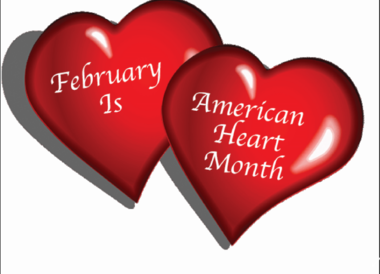Heart disease: Are you at risk?

by Courtney Caplan, MD, DMD
Cosmetic Surgery Columnist
Did you know on average, someone dies every forty seconds from cardiovascular disease? That’s about 2,200 deaths each day.
February is American Heart Month, and according to the American Heart Association, cardiovascular disease remains the leading global cause of death with more than 17.3 million deaths each year.
Cardiovascular disease includes all heart disease and strokes.
Simply stated, cardiovascular disease is when the blood vessels that deliver blood and oxygen get clogged. The organs are unable to receive the needed oxygen.
A heart attack, also known as myocardial infarction, is when the blood vessels in the heart get blocked. Part of the heart muscle dies because it does not get oxygen.
A stroke happens when the blood vessels get blocked or, less commonly break and bleed, and the brain does not get its needed blood flow and oxygen.
Strokes account for approximately one of every 20 deaths in the United States.
On average, someone dies from a stroke every four minutes.
Knowing these statistics, I would like to educate you on how to recognize a stroke and what you can do if you witness a person having one.
There are three signs you can look for if you suspect a person may be having a stroke.
The first sign is facial droop. Ask the person to smile or show their teeth; if both sides move equally, that’s normal. If one side does not move, that is facial droop.
The second sign to look for is arm drift. Have the person hold both arms straight out in front of them with their eyes closed for 10 seconds. A normal response is if both arms move the same amount or do not move at all. An abnormal response is if one side does not move or one arm drifts down compared with the other.
The last sign to look for is abnormal speech such as slurring words, using the wrong words or inability to speak.
If a person displays any one of these three signs, there is a 72 percent probability they are having a stroke.
If you witness any of these signs, call 911 immediately.
One other very important thing to do is note the time you last saw the person acting their normal self. Certain treatments are only available to the patient if the stroke has occurred in less than three hours, therefore, calling immediately and knowing the timeline is extremely valuable.
Of note, two other common problems that can mimic a stroke are seizures and low blood glucose.
Here are several tips to lower your risk of cardiovascular disease:
- Stop smoking.
- Eat healthier: Increase fiber and protein; cut the carbs and saturated fat in your diet.
- Exercise: On average, one in three adults do not engage in enough recreational physical activity. The recommended amount of daily physical activity is 30-60 minutes.
- Manage your blood pressure: Talk to your doctor if diet and exercise alone can control your blood pressure or if a medication may be right for you.
- Control your blood glucose: Most people with diabetes die from either heart or blood vessel disease. Decrease your sugar intake and talk to your doctor if medication is needed.
As a cosmetic surgeon, I perform elective cosmetic surgeries to help people feel better about their bodies Most patients who come to see me want to look like they used to or as they always thought they should appear.
Although I am always eager to help, patient safety is always my number one goal. I evaluate each patient’s overall health, especially their cardiovascular health, to see if they are safe to proceed with surgery.
Many of the above facts found at www.heart.com.
The Gayly. February 6, 2018. 9:28 a.m. CST.





